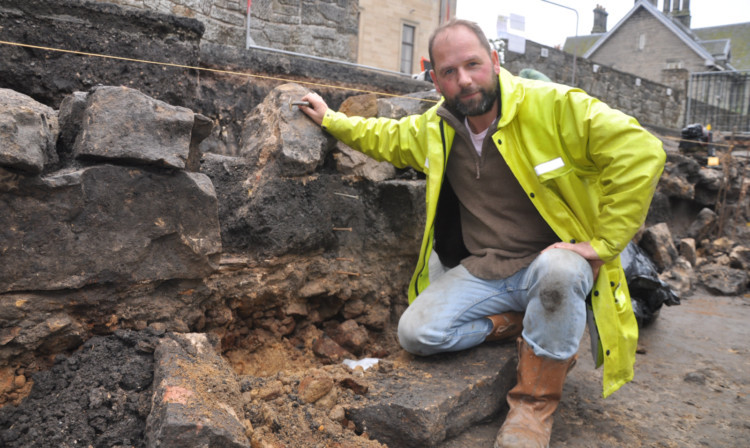A claim that a forthcoming exhibition featuring two human skeletons is “immoral” has been vehemently rejected.
Voices From the Past: Life and Death in Medieval Dunfermline opens at Abbot House Heritage Centre in the town next month, featuring the human remains of two individuals.
The bones were unearthed during the early 1990s when new pipes were being laid at the eastern end of the property.
Fife Council and Fife Cultural Trust loaned them to Abbot House Heritage Centre, where they remain in storage.
The skeletons will be put on show from April 25 by the trustees of Abbot House, led by Abbot House director Dr Devon McHugh, as part of an exhibition that aims to demonstrate, through human osteology, the way in which people lived and died in medieval Dunfermline.
The move has been criticised by former honorary past president of Dunfermline Heritage Trust Sheila Pitcairn, who believes the exhibition constitutes “moral abuse”.
She said: “It is not good practice to retain human remains. There is a very clear code of professional conduct relating to the treatment of human remains… and, as a past chair and honorary member of Dunfermline Heritage Trust, I object strongly to these skeletons being put on display.”
Responding to Ms Pitcairn’s concerns, Fife Council archaeologist Douglas Speirs, who has been heavily involved in various excavations projects at Abbot House over the years, stressed the display of the skeletons would be carried out in a “thoughtful, ethical and professional” manner, and praised the work of Dr McHugh and the trustees.
“Of course, Sheila raises a very important point about the issue of the display of human skeletal material,” he told The Courier.
“This is a subject that has been at the core of ethical thinking in archaeology for decades and consequently there is a wealth of best practice guidance and legislation governing exactly how, when and why human remains aredisplayed for archaeological, educational and research purposes.
“If the material was being used in an inappropriate manner, then I would be the first to complain but it’s not.
“A limited amount of material will be temporarily displayed for educational purposes to illustrate the nature of archaeological evidence available for the study of Dunfermline’s past and the material will be displayed in a sensitive and professional manner.
“Indeed, it could be argued that not to include such material in the forthcoming exhibition would be to present a partial picture of the nature of archaeological inquiry. I would urge members of the public to visit the exhibition and make their own minds up.”
There will be an invitation-only launch party for the exhibition on Thursday April 24.
